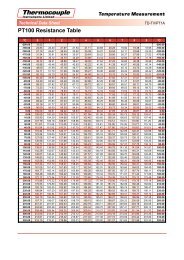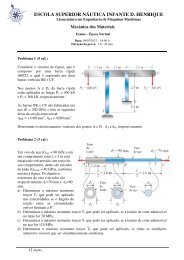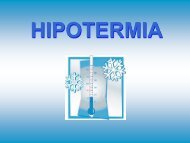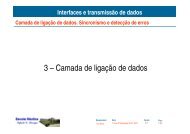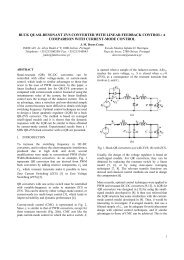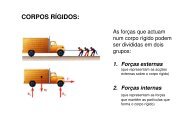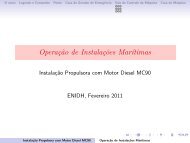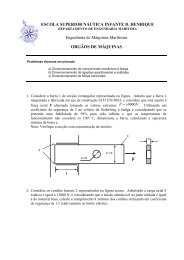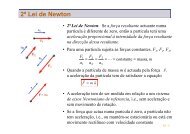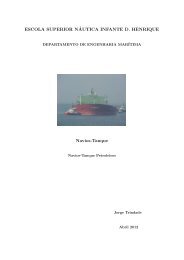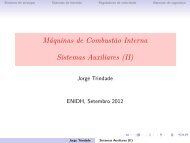Textos de Apoio (pdf)
Textos de Apoio (pdf)
Textos de Apoio (pdf)
Create successful ePaper yourself
Turn your PDF publications into a flip-book with our unique Google optimized e-Paper software.
ITTC –Recommen<strong>de</strong>d<br />
Procedures<br />
Full Scale Measurements<br />
Speed and Power Trials<br />
Trial Conditions<br />
7.5 – 0.4<br />
01 – 01.5<br />
Page 3 of 6<br />
Effective Date<br />
2002<br />
Revision<br />
01<br />
4. Speed/Power Trials are normally scheduled<br />
within 30 days of undocking to minimize<br />
the adverse effects of hull and propulsor<br />
fouling and provi<strong>de</strong> a more "standard" condition<br />
for testing. In situations where the<br />
ship has become fouled after undocking, a<br />
hull cleaning, propeller polishing and hull<br />
and propeller roughness survey should be<br />
performed within 30 days of the<br />
Speed/Power trial date. Guidance may be<br />
found in Hull and Propulsor Survey Procedure<br />
7.5-04-01-01.3. At a minimum, the<br />
ship’s latest docking report and diver inspection<br />
should be provi<strong>de</strong>d to fulfill this<br />
requirement. Guidance may be found in<br />
Speed/Power Trial Ship Inspection Procedure<br />
7.5-04-01-01.2.<br />
5. Draft, trim and displacement of the trials<br />
must be obtained by averaging the ship<br />
draft mark readings. The ship should be<br />
brought into a condition that is as close as<br />
possible to the contract condition and/or the<br />
condition by which mo<strong>de</strong>l tests have been<br />
carried out. This will allow for the correction<br />
of the displacement and trim with respect<br />
to the trials that were conducted and<br />
will be applicable to the suggestions outlined<br />
in the 23rd ITTC Speed and Powering<br />
Trials Specialist Committee final report.<br />
a. Draft, trim and displacement must be<br />
obtained at the beginning and at the end<br />
of the trial. This may be accomplished<br />
using a loading computer or by taking a<br />
second draft reading. The accuracy of<br />
the ship's draft marks and the method<br />
used to calculate draft and displacement<br />
un<strong>de</strong>rway will be compared in port by<br />
direct draft readings both port and starboard<br />
in conjunction with a liquid load<br />
calculation. The trial team will verify<br />
and document the results prior to the<br />
Speed/Power trials.<br />
b. Displacement must be <strong>de</strong>rived from the<br />
hydrostatic curves by utilizing the draft<br />
data and the <strong>de</strong>nsity of the water. When<br />
<strong>de</strong>aling with Frou<strong>de</strong> numbers higher<br />
than 0.5 (e.g. a Fast Ferry with 100 m<br />
length and speed over 30 kn) intermediate<br />
ship loading conditions must be<br />
documented. This is better accomplished<br />
through tank soundings.<br />
6. Environmental factors can significantly influence<br />
the data obtained during sea trials.<br />
Consequently, these factors must be monitored<br />
and documented to the greatest extent<br />
possible.<br />
a. High wind and sea states can force the<br />
use of excessive rud<strong>de</strong>r to maintain<br />
heading, and thus cause excessive fluctuations<br />
in shaft torque, shaft speed and<br />
ship speed.<br />
b. Sea states of 3 or less and a true wind<br />
speed below Beaufort 6 (20 kn) are the<br />
<strong>de</strong>sired conditions for sea trials. When<br />
working un<strong>de</strong>r the time constraints of a<br />
contract, corrections to the trials data<br />
can be ma<strong>de</strong> in accordance with the recommendations<br />
provi<strong>de</strong>d in the 23rd<br />
ITTC Speed and Powering Trials Specialist<br />
Committee final report for sea<br />
states less than or equal to 5. For sea<br />
states greater than 5, corrections to the<br />
trials data can be applied but are not<br />
consi<strong>de</strong>red reliable from a scientific<br />
standpoint.<br />
c. The local seawater temperature and specific<br />
gravity at the trial site are recor<strong>de</strong>d<br />
to enable the calculation of ship's displacement.<br />
d. Air temperature and atmospheric pressure<br />
should be measured at the trial location<br />
using a calibrated thermometer<br />
and barometer.<br />
e. An acceptable minimum water <strong>de</strong>pth for the<br />
trials where the data do not need to be cor-


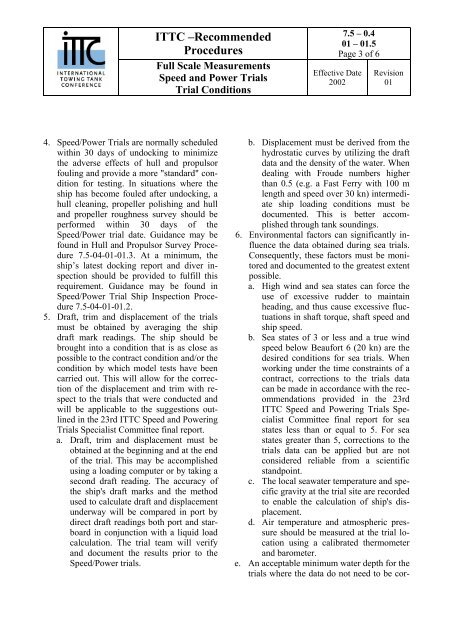
![Conceitos transmissao de dados .Sinais[.pdf]](https://img.yumpu.com/50982145/1/190x146/conceitos-transmissao-de-dados-sinaispdf.jpg?quality=85)
![Packages e interfaces[.pdf]](https://img.yumpu.com/50629553/1/190x134/packages-e-interfacespdf.jpg?quality=85)
